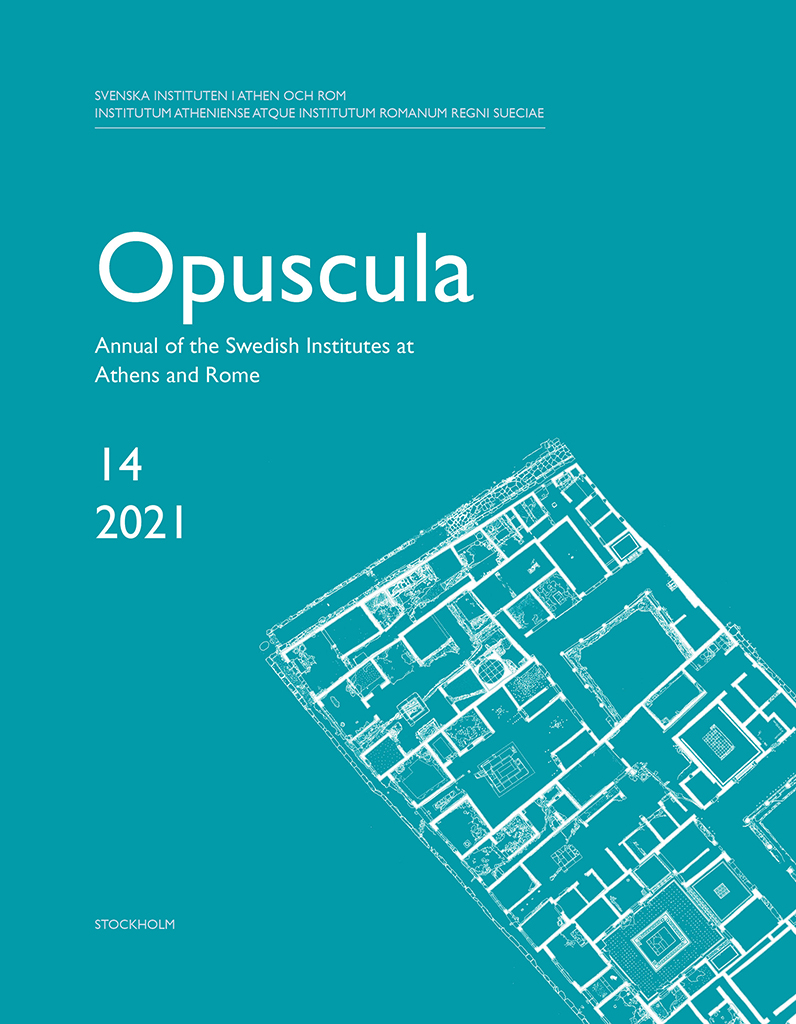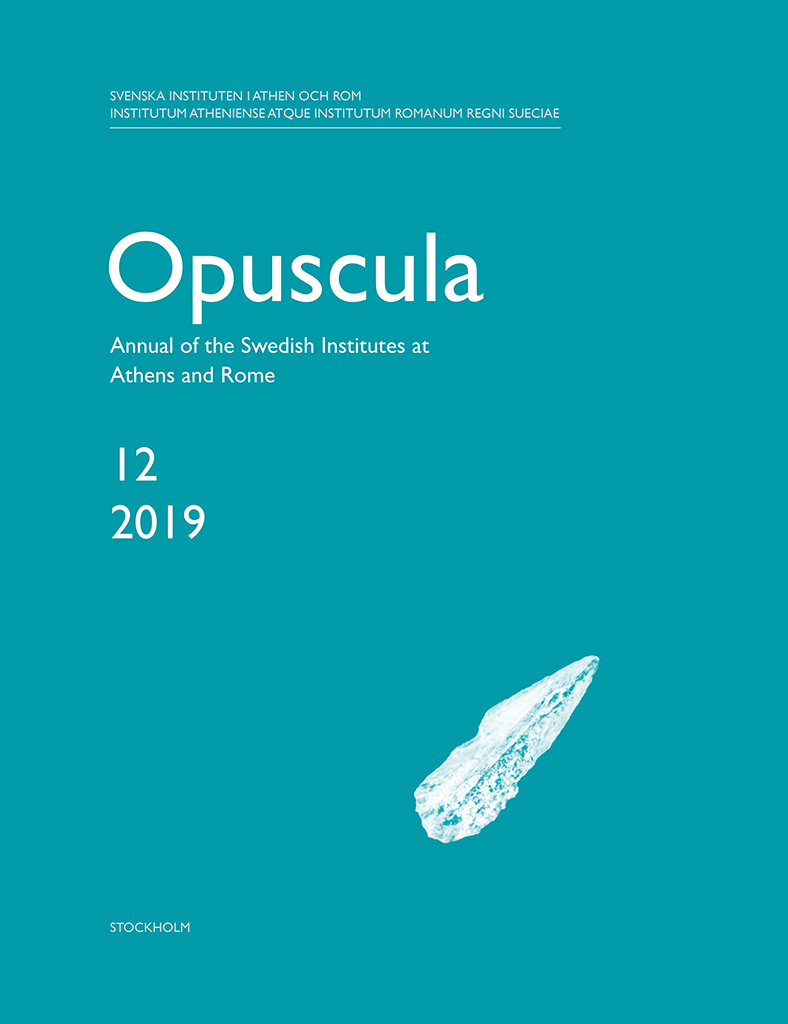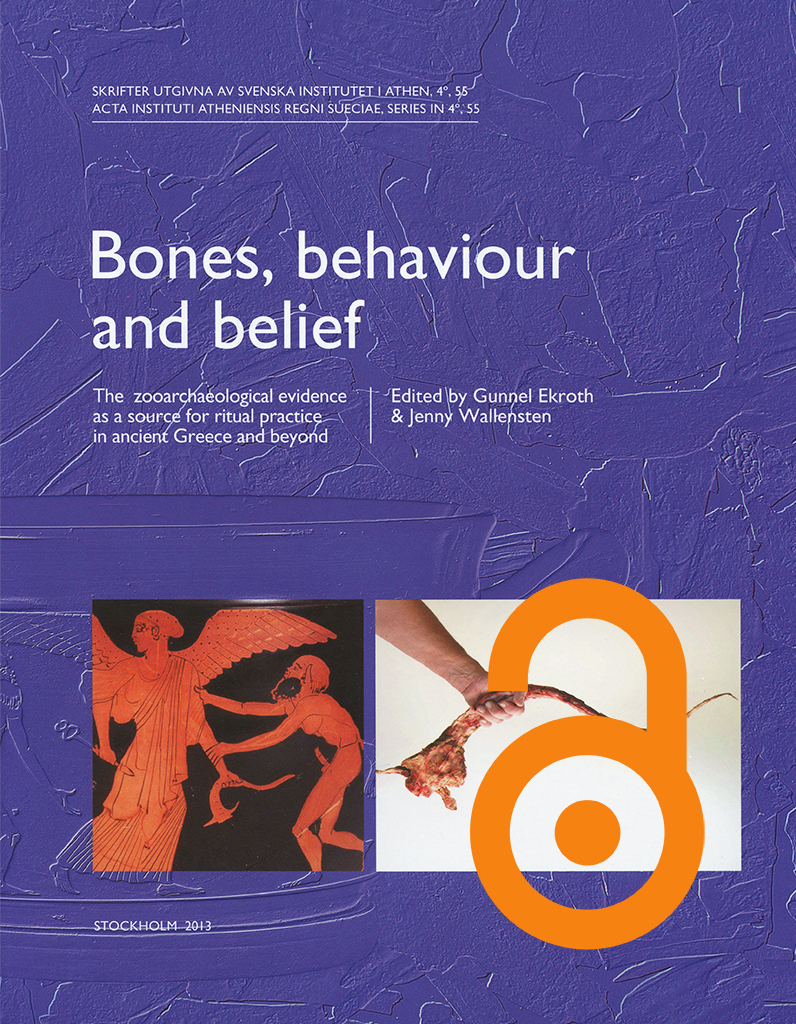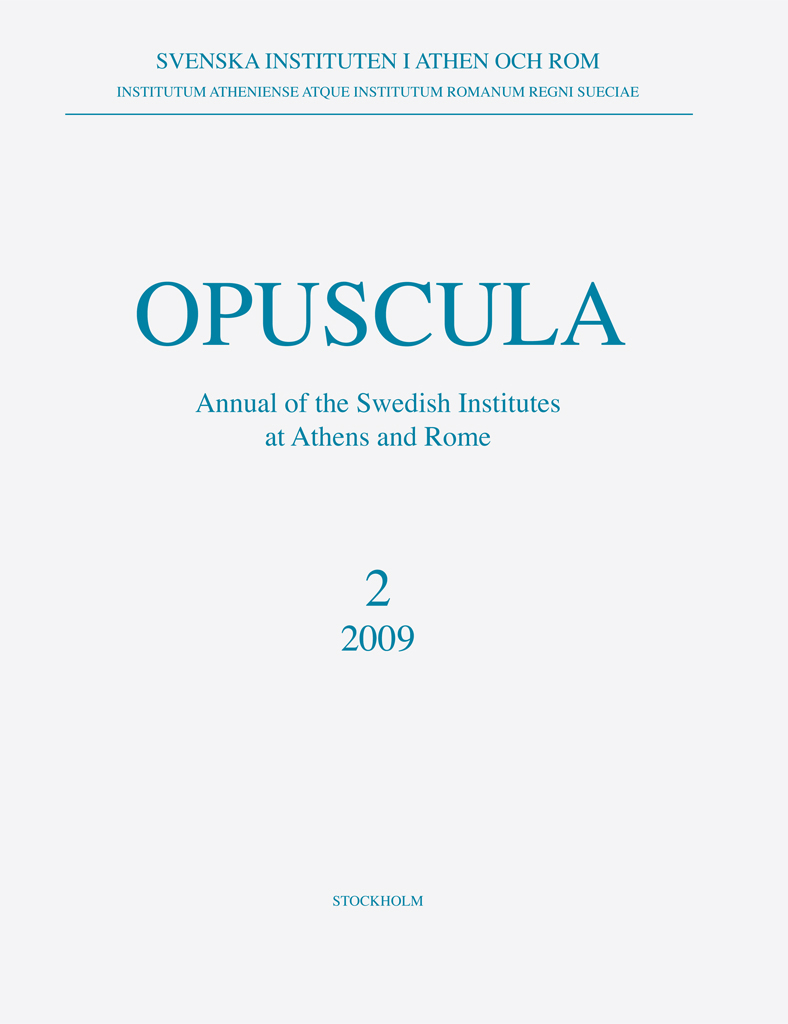Opuscula is published by the Swedish Institutes at Athens and Rome, with the aid of a grant from the Swedish Research Council. Distributed by Eddy.se AB. View journal at ERIH PLUS. All content available with open access. The Kalaureia Excavation Project. A preliminary report of the work carried out in Area L between 2015 and 2018 By Anton Bonnier (Uppsala University, Sweden), Therese Emanuelsson-Paulson (Stockholm University, Sweden), Dimitra Mylona (INSTAP Study Center for East Crete, Greece) & Arto Penttinen (Swedish Institute at Athens, Greece) Abstract The report presents a summary and preliminary discussion on the work carried out by the Swedish Institute at ancient Kalaureia between 2015 and 2018 in Area L. The excavations were focused on this area with the hopes of gaining a better understanding of the settlement which was situated south of the Sanctuary of Poseidon in antiquity. The excavations show that a large building was constructed probably around the middle of the 4th century BC in the western part of Area L. The full outline and functional use of the building has not yet been fully established but the building seems to have been in use in several subsequent phases. The excavated remains further suggest that…
Opuscula is published by the Swedish Institutes at Athens and Rome, with the aid of a grant from the Swedish Research Council. Distributed by Eddy.se AB. View journal at ERIH PLUS. All content available with open access. Animals in the sanctuary. Mammal and fish bones from Areas D and C at the Sanctuary of Poseidon at Kalaureia. With an appendix by Adam Boethius By Dimitra Mylona (INSTAP Study Center for East Crete, Greece) Abstract During the excavations at the Sanctuary of Poseidon at Kalaureia an extensive archaeo-environmental programme was implemented, resulting in the collection and analysis of a wide range of animal remains. This paper presents the mammal and fish remains in detail and offers interpretations which take into account the archaeology of the site, other types of finds, as well as the discourse on animals in cult. The material is examined in terms of chronological phases and of particular features within them in an attempt, common in all types of analysis within the Kalaureia Excavation Program, to link the material remains to human actions, placing emphasis on the materiality of cult. The degree of analysis and interpretation detail varies among different occupational phases of the sanctuary, because of the…
Opuscula is published by the Swedish Institutes at Athens and Rome, with the aid of a grant from the Swedish Research Council. Distributed by Eddy.se AB. View journal at ERIH PLUS. All content available with open access. Physical environment and daily life in the Sanctuary of Poseidon at Kalaureia, Poros. The bioarchaeological remains By Arto Penttinen (Swedish Institute at Athens, Greece) & Dimitra Mylona (INSTAP Study Center for East Crete, Greece) Abstract The section below contains reports on bioarchaeological remains recovered in the excavations in Areas D and C in the Sanctuary of Poseidon at Kalaureia, Poros, between 2003 and 2005. The excavations were directed by the late Berit Wells within a research project named Physical Environment and Daily Life in the Sanctuary of Poseidon at Kalaureia (Poros). The main objective of the project was to study what changed and what remained constant over time in the everyday life and in both the built and physical environment in an important sanctuary of the ancient Greeks. The bioarchaeological remains, of a crucial importance for this type of study, were collected both by means of traditional archaeological excavation and by processing extensively collected soil samples. This text aims to providing the theoretical…
Published by the Swedish Institute at Athens. Distributed by Eddy.se AB. All content is available with open access, use links below. Bones, behaviour and belief. The zooarchaeological evidence as a source for ritual practice in ancient Greece and beyond Edited by Gunnel Ekroth & Jenny Wallensten https://doi.org/10.30549/actaath-4-55 Abstract The importance of the zooarchaeological evidence as a source for ritual practices in ancient Greece is gradually becoming widely recognized. Animal bones form the only category of evidence for Greek cult which is constantly significantly increasing, and they can complement and elucidate the information provided by texts, inscriptions and images. This volume brings together sixteen contributions exploring ritual practices and animal bones from different chronological and geographical perspectives, foremost ancient Greece in the historical period, but also in the Bronze Age and as early as the Neolithic period, as well as Anatolia, France and Scandinavia, providing new empirical evidence from a number of major sanctuaries and cult-places. On a methodological level, the complexity of identifying ritual activity from the zooarchaeological evidence is a recurrent theme, as is the prominence of local variation visible in the bone material, suggesting that the written sources and iconography may offer simplified or idealized versions of the…
Opuscula is published by the Swedish Institutes at Athens and Rome, with the aid of a grant from the Swedish Research Council. Distributed by Eddy.se AB. View journal at ERIH PLUS. All content available with open access. Report on the excavations in the years 2007 and 2008 southeast of the Temple of Poseidon at Kalaureia By Arto Penttinen and Berit Wells (†). With contributions by Dimitra Mylona, Petra Pakkanen, Jari Pakkanen, Arja Karivieri, Anne Hooton and Emanuel Savini, and with an appendix by Tatiana Theodoropoulou. Abstract Archaeological material ranging in date from the Early Bronze Age to Late Antiquity was found in 2007 and 2008 in the excavations in Area H to the south and southeast of the Temple of Poseidon. Finds datable to the periods of major change in the Sanctuary—the Late Archaic and the Early Hellenistic—illuminate the character of the change. In the Late Archaic period an attempt to erect a votive column at the site was for some reason given up, and drums of large dimensions were left visible, possibly as a reminder of the failure. The construction of a monumental drain next to the Archaic peribolos of the Temple of Poseidon in the early third century…
Published by the Swedish Institute at Athens. Distributed by Astrom Editions. Pyrgouthi. A rural site in the Berbati Valley from the Early Iron Age to Late Antiquity. Excavations by the Swedish Institute at Athens 1995 and 1997 By Jenni Hjohlman, Arto Penttinen & Berit Wells, with contributions by Yannis Bassiakos, Katie Theodorakopoulou, Hero Granger-Taylor, Sven Isaksson, Petros Lymberakis, Dimitra Mylona, Maria Ntinou, Anaya Sarpaki & George Syrides Abstract This volume presents the results of the excavations in 1995 and 1997 at Pyrgouthi in the Berbati Valley, Argolis, Greece. The toponym is the local denomination for a Hellenistic tower, which has always been a prominent in the landscape. In the surface survey of the valley in 1988–1990 the tower was perceived as part of a Classical farmstead and in the ensuing excavation project it was targeted as such. However, the excavations revealed that this interpretation corresponded to but a fraction of the truth. The tower had been built on a knoll in the center of the valley but the earliest human activities at the site can be dated to the end of the Early Iron Age or the eight century BC. At this point in time, Arto Penttinen argues, the archaeological…





